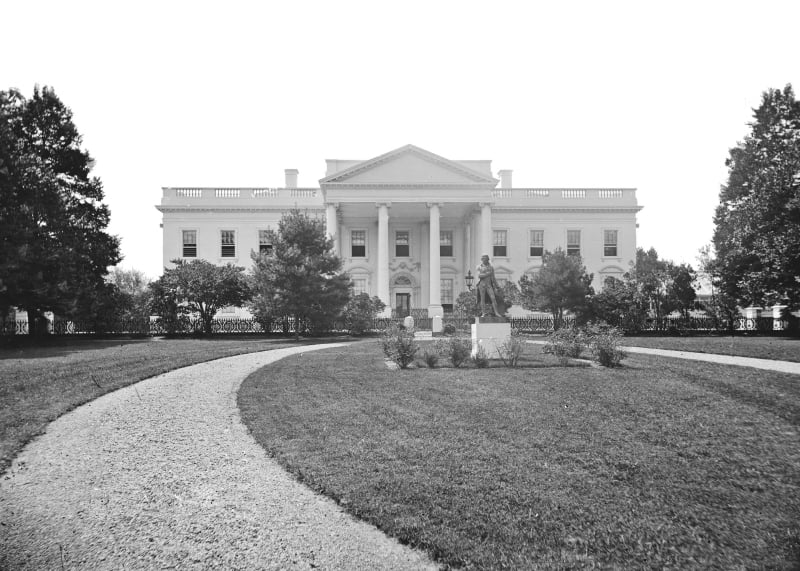The official residence and workplace of the President of the United States, the White House has played host to all but one head of state of the American nation since its completion in 1800. Situated at 1600 Pennsylvania Avenue in Washington D.C., the original neoclassical design by James Hoban, modeled on Leinster House in his native Dublin, has since been augmented and altered to become one of the most iconic buildings in the world. The seat of American government, home to the machinations and decisions of generations of politicians and commanders, it is perhaps unsurprising that the centuries have gifted the structure an array of incredible and bizarre anecdotes.
Here are some of the weirdest stories from history from inside the White House:

16. In 1970 Elvis Presley unsuccessfully asked Richard Nixon to make him a federal agent in the Bureau of Narcotics and Dangerous Drugs
One of the most significant cultural icons of the twentieth century, Elvis Presley revolutionized and epitomized the American music scene following his breakout in the mid-1950s. Topping charts throughout a sporadic and interrupted career, placed on hiatus both during his military service and to attempt a film-making career, in his later life “the King” suffered increasingly ailing health as a result of years of prescription drug abuse and addiction. Nevertheless, on December 21, 1970, Presley engineered a meeting with at the White House with President Richard Nixon, whom Presley allegedly personally despised, wherein Presley sought to offer a solution to the nation’s drug epidemic.
Expressing his patriotism and explaining to Nixon his potential as the face of American pop culture to reach a wider audience, in a bizarre encounter Presley requested Nixon provide him with official sanction as “Federal Agent-at-Large” and a badge from the Bureau of Narcotics and Dangerous Drugs. Clearly confused and finding the encounter with Presley immensely awkward, Nixon tactfully declined the request via flattery, allegedly responding he felt that Presley could better send a positive message to young people and earn their trust if he remained outside the confines of a government role as he could “retain his credibility”.

